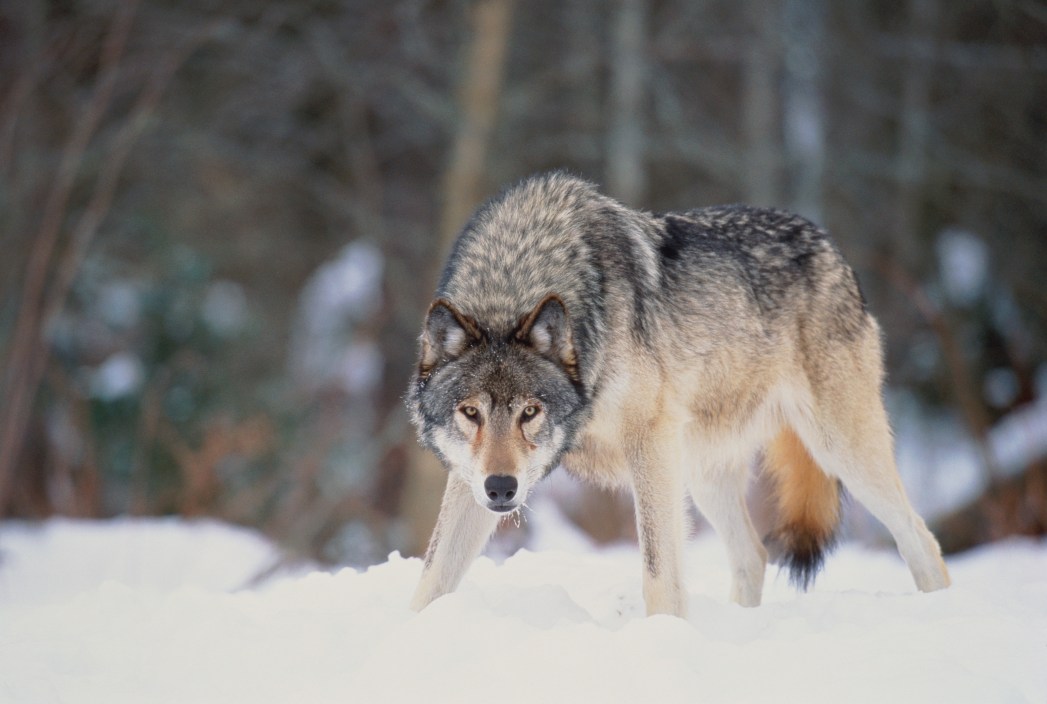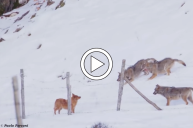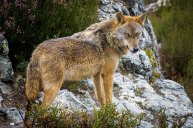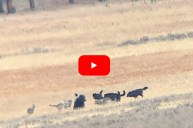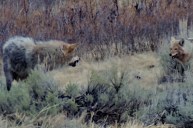It's pretty rare to spot a wild wolf and even rarer to encounter one close-up, but as wolf populations grow and expand across North America, it's a possibility every hiker and camper should be prepared for. As with any wild predator, from grizzlies to mountain lions, you should always be aware if your next adventure is in wolf territory, and what you should do if you see one.
Where Do Wolves Live?
In the United States, wild wolves are primarily found in:
- Alaska: Alaska is home to the highest concentration of wild wolves in the United States. They can be found throughout the state, including remote areas and wilderness regions.
- Northern Rocky Mountains: Wolves inhabit parts of the Northern Rocky Mountains, which include areas of Montana, Idaho, and Wyoming. Yellowstone National Park and its surrounding areas, including the Greater Yellowstone Ecosystem, are known for their wolf populations. While Colorado has fewer wolves than the other Rocky Mountain states, there are wolf populations at lower elevations by Vail and Aspen.
- Pacific Northwest: Wolves have made a comeback in the Pacific Northwest region and are found in states such as Washington and Oregon, particularly in forested and mountainous areas.
- Upper Midwest and Great Lakes region: Wolves are present in certain areas of Minnesota, Wisconsin, and Michigan. Isle Royale National Park, located in Lake Superior, is known for its wolf and moose populations.
Because of the higher number of wolves, backcountry travelers are more likely to come across a wolf in Alaska and Canada, as well as more rugged national parks such as Yellowstone.
While some wolves that live closer to towns or ranches may have a healthy fear of humans and know to stay away, if you are venturing into a remote area you're more like to run into a wolf that hasn't seen a human before. They may be more curious and less fearful.
How Dangerous Are Wolves? Do They Attack?
Wolves, as a species, are usually timid. There have only been six North American wolf attacks by wild wolves in the 21st century: two of these were fatal attacks, one in 2005 in Saskatchewan and another in 2010 in Alaska, both in incredibly remote areas. Before that, the last recorded fatal attack by a wild wolf was in Canada in the 1920s.
Wolf attacks are extremely rare, but if they do attack, it is often triggered by a depleted food supply, and humans in their territory could be viewed as a food source.
While all of the North American wolf attacks were predatory, a 2021 study found that 78% of wolf attacks worldwide are due to rabid wolves. Thankfully, rabies outbreaks in wolves are incredibly rare in the US.
How to React If You See a Wolf

Getty Images, John Morrison
The best intervention is always prevention. When traveling through known wolf country, you want to:
- Stay alert and scan your surroundings.
- Travel in groups.
- Keep control of any dogs or young children.
- Don't leave food out if you are camping in the backcountry.
If you do happen upon one of these large predators, the Alaska Department of Fish and Game has some tips to stay safe during the encounter.
- Don't run, but act aggressively stepping toward the wolf and yelling or clapping your hands if it tries to approach.
- Do not turn your back toward an aggressive wolf, but continue to stare directly at it. If you are with a companion and more than one wolf is present, place yourselves back to back and slowly move away from the wolves.
- Retreat slowly while facing the wolf and act aggressively.
- Stand your ground if a wolf attacks you and fight with any means possible (use sticks, rocks, ski poles, fishing rods or whatever you can find).
- Use air horns or other noisemakers.
- Use bear spray or firearms if necessary. If the wolf attacks, fight for your life and cover your head and neck.
- Climb a tree if necessary; wolves cannot climb trees
We hope it goes without saying that under no circumstances should you ever try to feed or approach wolves, especially near den sites. Remember these are wild animals that are unpredictable and can be incredibly dangerous if provoked or threatened.
READ MORE: How to Stay Safe Hiking in Bear Country, According to a Park Ranger
